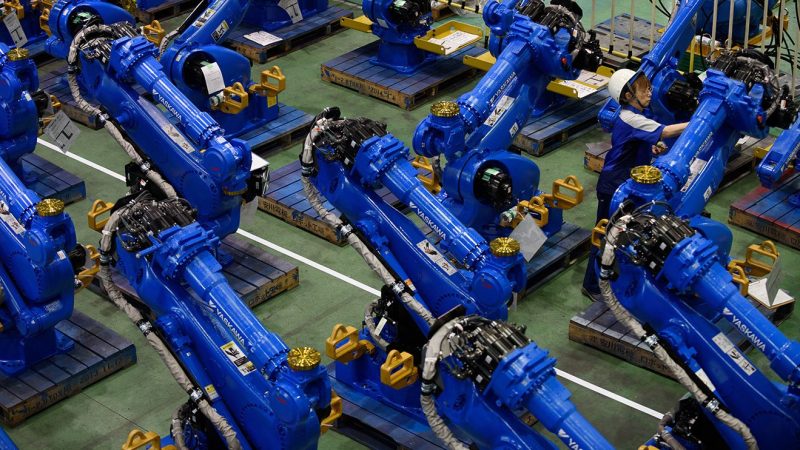
It’s the catch-22 of the 21st century: automation makes us more productive but takes jobs away from humans. Despite this, fiscal soothsayers like Mark Cuban are calling for the United States to invest more money in robots.
Part of President Trump’s domestic platform on the campaign trail included his promise to keep companies, specifically in the manufacturing industry, operating in the United States. That can happen, Cuban thinks, if American companies invest in robots—something that’s sure to alarm factory workers across the Rust Belt, Trump’s bastion of political support. Unfortunately for them, the reality of the manufacturing industry today is that more and more work is being done by robots.
In fact, the U.S. manufactured more goods in 2016 than it ever did before. Here’s the caveat: that’s 85 percent more than America made in 1987, but with the help of about 33 percent fewer humans. And although the United States invented industrial robots, China is now the largest market in the world for them. This was Cuban’s cause célèbre when he proposed Trump should spend $100 billion in funding for industrial robotic research.
Industry experts are worried that industrial robotics could be the tipping point between the China-U.S. economic turf battle, and that Americans will be on the losing side. China is on track to become the world’s largest producer of industrial robots, and some experts say that’s as soon as ten years away. While the silver lining for industrial automation has always been maintenance and repair, if the industrial robots weren’t made in the U.S., no such silver lining exists. Needless to say, American factory workers would still be losing jobs to robots at that point.
“If you look at the comparisons in investment between China and the U.S., we’re going to lose,” Henrik Christensen, director of the Contextual Robotics Institute at the University of California, San Diego, told The New York Times. “The investments in China are billions and billions. I’m not seeing that investment in the U.S. And without that investment, we are going to lose. No doubt.”
Watch the video above for more information about job displacement, caused by industrial robots, in the United States. To learn more about how China came to be in the position and how the United States can compete better, click here.
—RealClearLife Staff
This article was featured in the InsideHook newsletter. Sign up now.